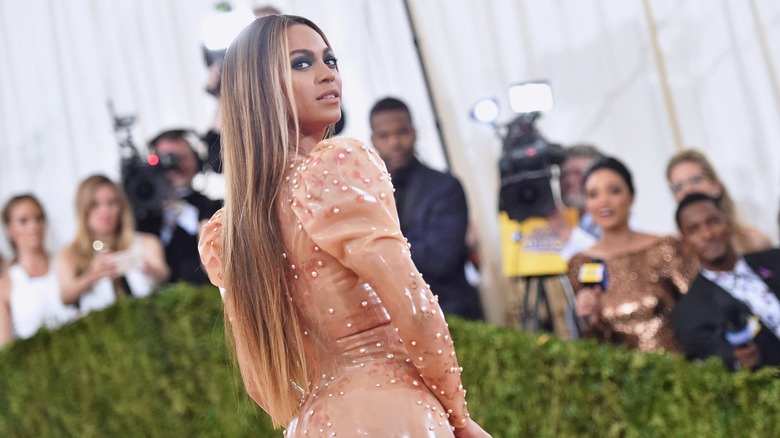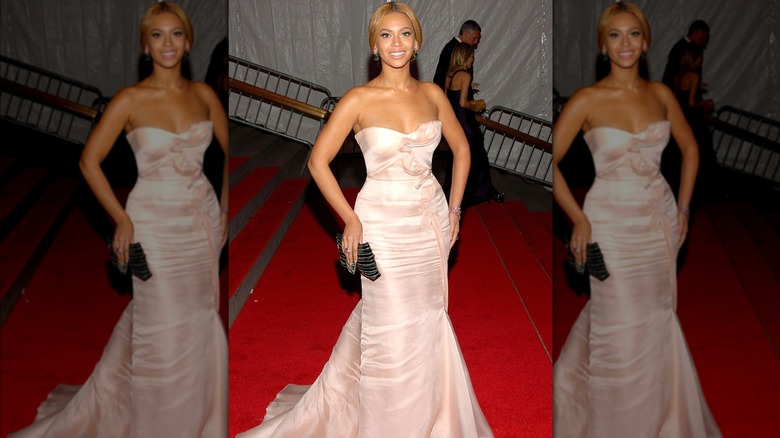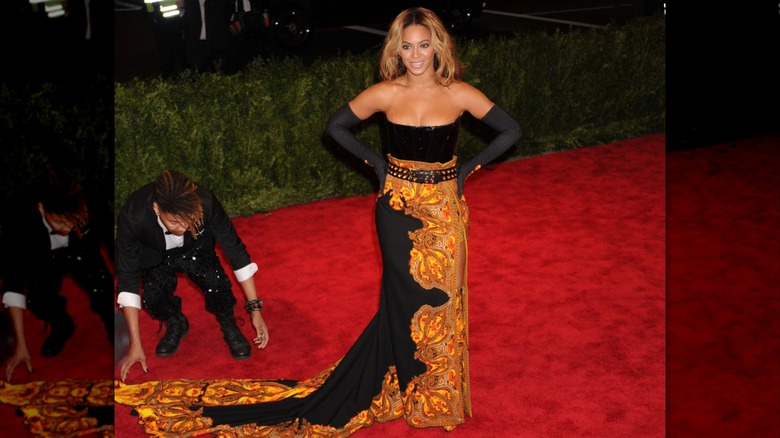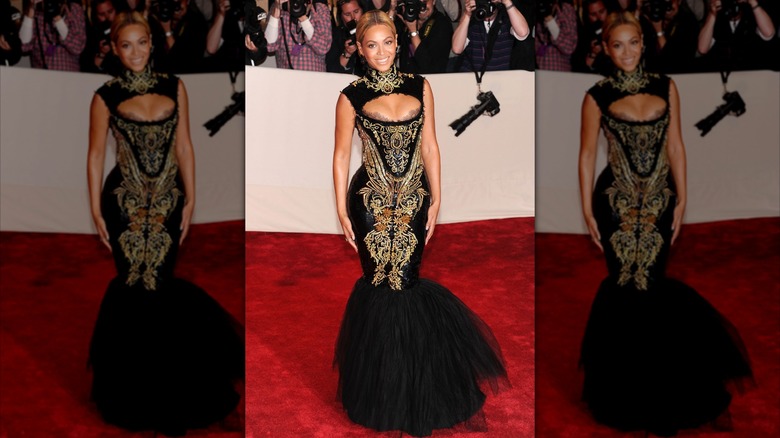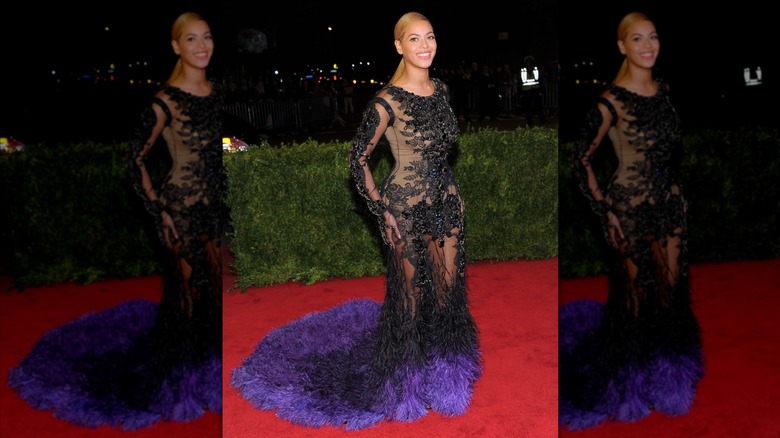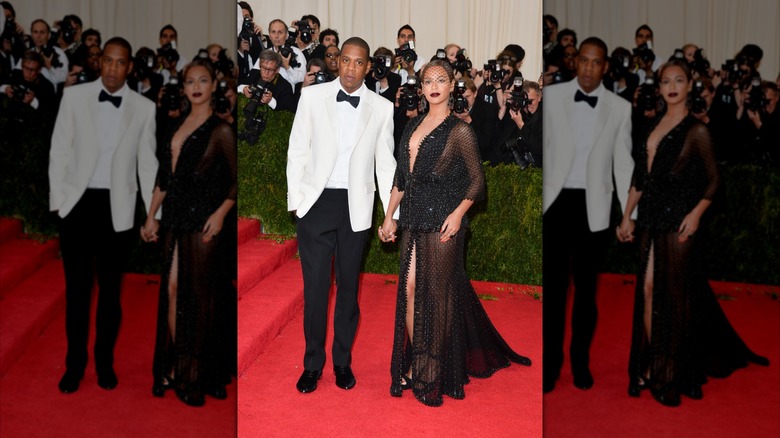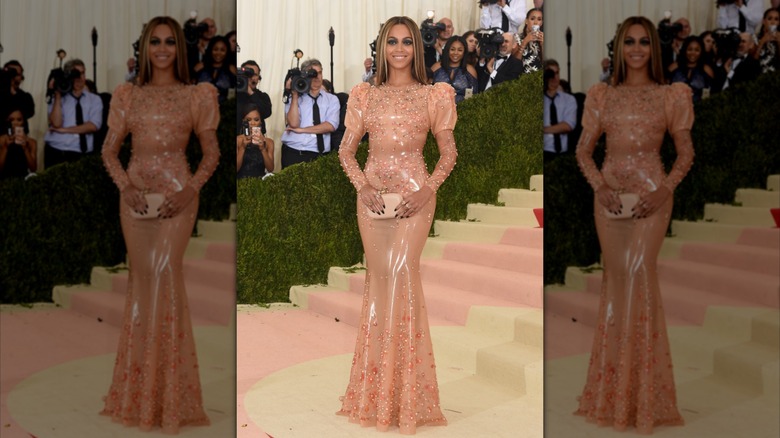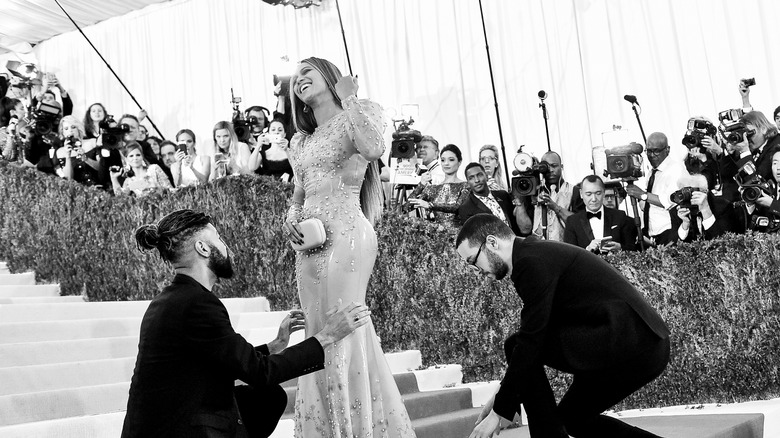Beyonce's Stunning Met Gala Looks, Ranked
To discuss Beyoncé's presence at the Met Gala is, in many ways, to talk about restraint. Not hers — she rarely holds back — but ours, as observers, in attempting to describe it without lapsing into pure reverence. Her contribution to culture exists at the intersection of precision and spectacle: always informed, always immaculate.
The Met Gala, with its grand themes and operatic scale, is the perfect stage for this kind of fashion storytelling. What began as a relatively understated New York fundraiser for the Costume Institute in the mid-twentieth century has evolved (thanks in large part to the long arm of Anna Wintour) into fashion's most high-stakes pageant. Wintour's influence, beginning in the 1990s, shifted the event from an elite industry gathering to a celebrity-saturated spectacle, where interpretation of the annual theme is both a privilege and a pressure. Today, the Met Gala is a cultural litmus test, the Olympics of fashion, with every train, trim, and twist of fabric catalogued and parsed for meaning.
Beyoncé has appeared on the Met steps only seven times — a surprisingly modest tally for someone so closely associated with image as art. Yet each of those appearanecs, styled by her longtime collaborator Ty Hunter, has been momentous. Hunter, who began his career in retail before being recruited by Tina Knowles to work with Destiny's Child, has helped shape Beyoncé's fashion narrative for over two decades. At the Met, their work together took on new dimension, marrying Hunter's detail-driven perception with Beyoncé's unshakable presence to produce looks that bend the brief to suit a singular vision.
Superheroes: Fashion and Fantasy in 2008
In a year that called for camp (latex, chrome, capes), Beyoncé stepped out in an Armani Privé gown that could have belonged to any number of evenings, not least a high school prom night. Her blush silk gown, serene in its mermaid silhouette and gently fluted with a single ruffle, was undeniably pretty and worn with poise — but it was entirely unbothered by the demands of the theme.
Beyoncé was not alone in her thematic disengagement that night, proving just how conservative the Met Gala could still feel in its pre-spectacle era. Without a gesture to the symbolic heft of superhero costuming and fashion's transformative capacity for fantasy, let this be a reminder of just how aesthetically bankrupt the late 2000s were.
Punk: Chaos to Couture in 2013
Beyoncé's 2013 appearance was nothing if not theatrical. The look was styled with maximalist conviction: a strapless black python corset cinched at the waist, paired with a loud baroque fire-printed skirt, opera gloves, and matching over-the-knee boots.
The exhibition that year explored the uneasy collision between the punk subculture's DIY rawness and the clinical elegance of couture. The spirit of punk lies in subversion, in challenging systems and aesthetics from the inside out. This, by contrast, was pageantry dressed as protest. Though it made for a striking image — and the cut undeniably flattered her enviable figure — the overall impression gave more high-budget costume than considered couture. It was certainly brash, but in the absence of refinement, the ensemble tipped into excess. The look bypassed irony, referencing chaos without critique, ultimately flattening punk into pattern.
Alexander McQueen: Savage Beauty in 2011
2011 saw a black velvet gown tightly contoured to the body, its surface threaded with ornate gold embroidery. A high neckline and structured shoulders opened into a precise keyhole cut, as the skirt flared into a plume of inky tulle from the knees down. It was certainly a silhouette designed to impress, but did it disturb?
Savage Beauty, the McQueen retrospect that year, celebrated a vision of beauty that was haunted and often violent. His work thrived on tension between beauty and brutality, unafraid of collapse. Beyoncé's gown, though grand in scale and rich in detail, never quite entered that grotesque territory. It was certainly a beautiful tribute, but it remained intact — too untouched by the sense of danger, decay, or delirium that made McQueen matter.
Schiaparelli and Prada: Impossible Conversations in 2012
Beyoncé's 2012 Met Gala look, designed by Givenchy, offered a sumptuous rejoinder to Schiaparelli and Prada: Impossible Conversations — an exhibition that traced the aesthetic affinities and ideological divergences between the two Italian visionaries from opposing ends of the 20th century. Where Elsa Schiaparelli reveled in surrealism and theatrical excess, Miuccia Prada championed sleek conceptualism.
Beyoncé married both sensibilities. The sheer nude foundation was veiled in obsidian embroidery, before cascading into a dreamy romantic ombré feathered train that shifted to ultraviolet. The texture and tonal drama paid homage to Schiaparelli's flair for the fantastical, as the precision of the silhouette and the deliberate use of transparency channeled Prada's minimalist provocation.
Charles James: Beyond Fashion in 2014
Charles James, who approached dressmaking with the rigor of an engineer, was known for folding fabric into sculptural forms with mathematical precision. Beyoncé's look for the 2014 Met Gala, though far less voluminous, observed the same principles. The sheer, beaded fabric skimmed the body with near-geometric exactitude, whilst the cape-like overlay introduced volume without disrupting the integrity of the silhouette.
She looked, by any measure, beautiful. Her netted birdcage veil and plum lipstick added a noir edge, lending the look the moody drama James favored, but filtered through an economy of line and proportion. Where James used taffeta and satin to build gowns with three-dimensional curves, Riccardo Tisci — the Givenchy designer behind this look — did it here with negative space, surface tension, and refreshed styling. Finally, despite the undeniable red flags in Bey's relationship with Jay-Z, the rapper appeared alongside the singer in a white tuxedo jacket to complement her look.
China: Through the Looking Glass in 2015
China: Through the Looking Glass invited designers to explore the Western gaze on Chinese aesthetics: a fantasia of porcelain, embroidery, and ornament refracted through the language of couture. Beyoncé called upon Riccardo Tisci of Givenchy Haute Couture once again for her interpretation of the theme. She arrived in a nearly-nude illusion gown embroidered with crystals and beading. The strategic placement of embellishments turned her body into ornament. The diaphanous fabric left little obscured, but the chastity of its high neck and long sleeves teased a controlled seduction.
Though this dress sidestepped any literal reference to tradition, its swirling florals and glinting appliqué gestured towards the delicacy of Chinese textile work. This was global influence and cultural pastiche filtered through visual enchantment.
Manus x Machina: Fashion in an Age of Technology
Can couture survive the machine age? 2016 asked exactly that with its Manus x Machina theme. This was a year preoccupied with process: the stitch and the circuit, and the space between the artisan's hand and the mechanical press. Beyoncé's look embodied that dialectic with a romantic uncanniness.
Riccardo Tisci's vision took shape in pale latex — a material born of industrial modernity, here transformed into the unlikely foundation for couture embellishment. The gown was studded with clusters of hand-applied pearls. Its puffed sleeves and nipped waist evoked Victorian proprietary (a fitting reference to the era that saw the height of the Industrial Revolution), but its gloss gave an alien veneer — a soft exoskeleton rendered with an improbable tenderness. This, in concept and execution, was exquisite.
Our ranking, explained
To rank all of Beyoncé's stunning Met Gala appearances, each look was assessed based on a combination of criteria that balanced artistry with thematic relevance. First and foremost, we considered how successfully each ensemble interpreted the Met Gala's annual theme — both in literal and conceptual terms. Beyond that, the design and craftsmanship of each grown were evaluated. Styling also played a pivotal role, including accessories, hair (for hers offers a blond shade that might inspire your next salon trip) and glam (though Beyonce is gorgeous going makeup-free).
Finally, we reflected on the legacy of each appearance — whether it pushed the boundaries of red carpet fashion and how well it has endured in public memory.
